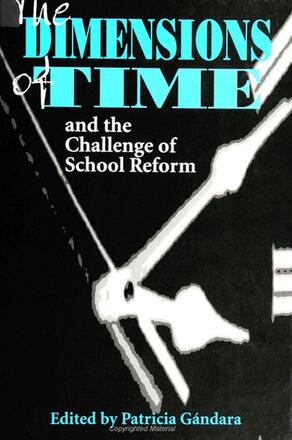
The Dimensions of Time and the Challenge of School Reform
Alternative formats available from:
Rather than simply lamenting that there is never enough time in the school day, this book looks at the dimensions of time as a significant factor in the success and failure of many of today’s school reform efforts.
Description
As the education reform movement matures into its second decade, it is clear that many promising efforts have fallen short in their attempts to create real school change. One reason for this is that the process of school reform is much more complex than most reformers realized or were willing to acknowledge. The Dimensions of Time and the Challenge of School Reform points to another problem—the problem of time—and its role in both the success and failure of school reform efforts. The importance of understanding the role that time plays in both learning and instruction and finding ways to provide time for teachers grappling with change and students learning to accommodate a new language and culture are important themes in this book. This book is directed to policymakers and practitioners as well as to academics in that it combines theory with the "real world" experiences of many who have been active in the school reform movement and who have learned, through trial and error, how to think about time in innovative ways.
[Contributors include Lorin Anderson, Judy Fish, Patricia Gándara, Anne Jaramillo, Carolyn Kneese, John Lofty, Catherine Minicucci, Audrey Noble, Laurie Olsen, Allan Pitman, Susanna Purnell, Robert Reichardt, Thomas Romberg, Mary Lee Smith, and Jon Wagner.]
Patricia Gandara is Associate Professor of Education, University of California, Davis. She is the author of Over the Ivy Walls: The Educational Mobility of Low-Income Chicanos, also published by SUNY Press.
Reviews
"This volume brings together two disparate, but highly interdependent fields of research—that of research on time and learning and that of research on school reform. It is an appealing and productive combination. A valuable sourcebook."—Nancy Karweit, Center for Social Organization of Schools, Johns Hopkins University
"The book has a rich array of different ways to look at time. The cases, theoretical descriptions, multi-cultural settings—all of these add to an interesting and potentially important book for the field. I found this book to be very interesting in many respects. I learned from it, resonated to many of the chapters, and deepened my understanding of how to think about time in schools."—Ann Lieberman, Teachers College, Columbia University